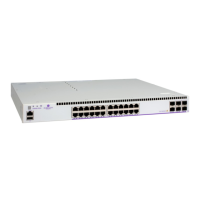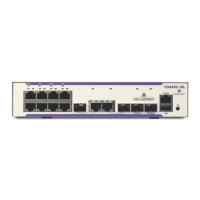SDP Commands
Page 106 7210 SAS M Services Guide
shutdown, causing the association with the SDP to be operationally down (the LSP will not be used
by the SDP).
The no form of this command deletes one LSP associations from an SDP. If the lsp-name does not
exist as an association or as a configured LSP, no error is returned. An lsp-name must be removed
from all SDP associations before the lsp-name can be deleted from the system. The SDP must be
administratively disabled (shutdown) before the last lsp-name association with the SDP is deleted.
Default none
Parameters lsp-name — The name of the LSP to associate with the SDP. An LSP name is case sensitive and is
limited to 32 ASCII 7-bit printable characters with no spaces. If an exact match of lsp-name does
not already exist as a defined LSP, an error message is generated. If the lsp-name does exist and
the LSP to IP address matches the SDP far-end IP address, the association is created.
signaling
Syntax signaling {off | tldp}
Context config>service>sdp
Description This command specifies the signaling protocol used to obtain the ingress and egress pseudowire
labels in frames transmitted and received on the SDP. When signaling is off then labels are manually
configured when the SDP is bound to a service. The signalling value can only be changed while the
administrative status of the SDP is down.
The no form of this command is not applicable. To modify the signaling configuration, the SDP must
be administratively shut down and then the signaling parameter can be modified and re-enabled.
Default tldp
Parameters off — Ingress and egress signal auto-labeling is not enabled. If this parameter is selected, then each
service using the specified SDP must manually configure VPN labels. This configuration is
independent of the SDP’s transport type, MPLS (RSVP or LDP).
tldp — Ingress and egress pseudowire signaling using T-LDP is enabled.
path-mtu
Syntax path-mtu bytes
no path-mtu
Context config>service>sdp
Description This command configures the Maximum Transmission Unit (MTU) in bytes that the Service
Distribution Point (SDP) can transmit to the far-end device router without packet dropping or IP
fragmentation overriding the SDP-type default path-mtu.
The default SDP-type path-mtu can be overridden on a per SDP basis. Dynamic maintenance
protocols on the SDP like RSVP may override this setting.
